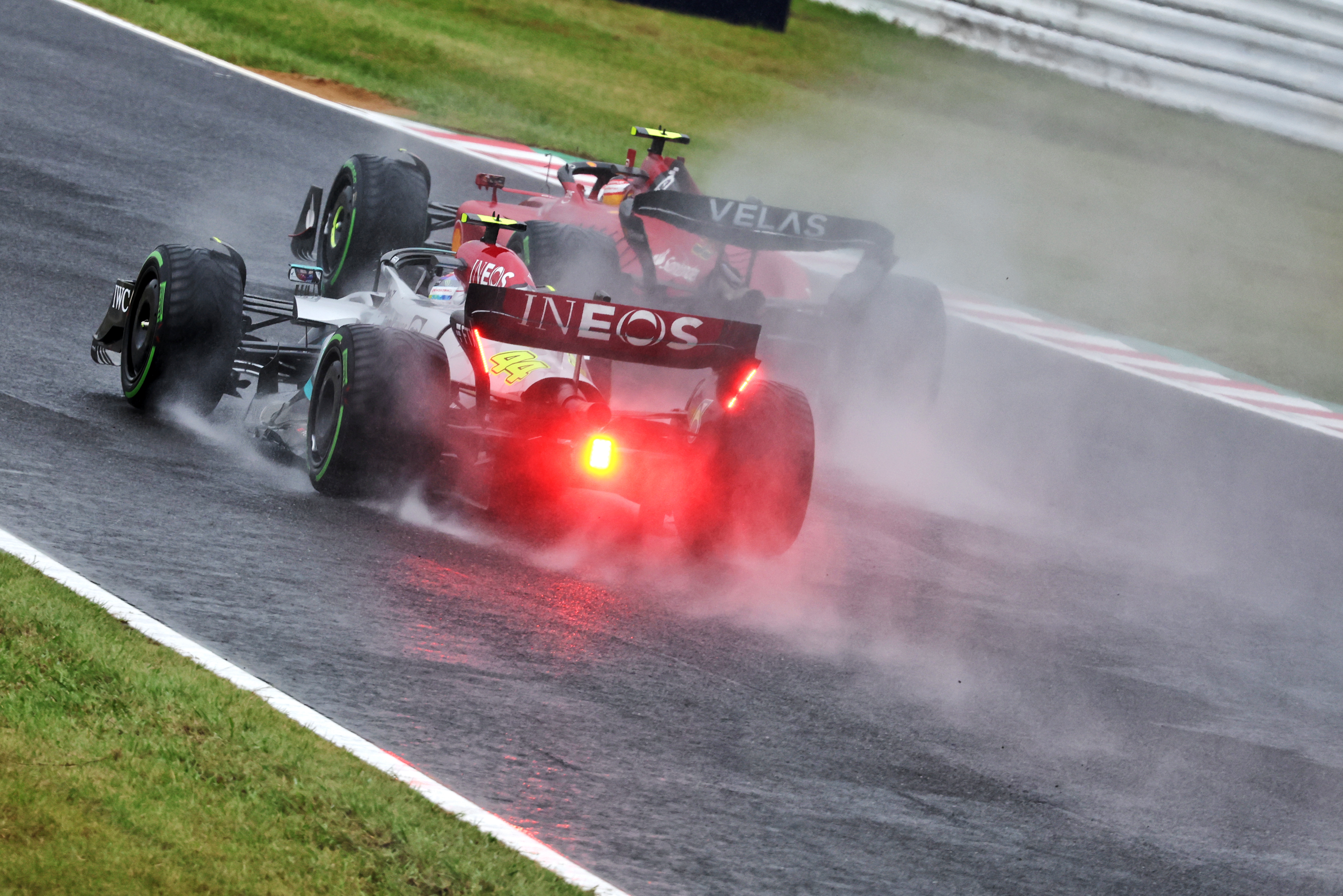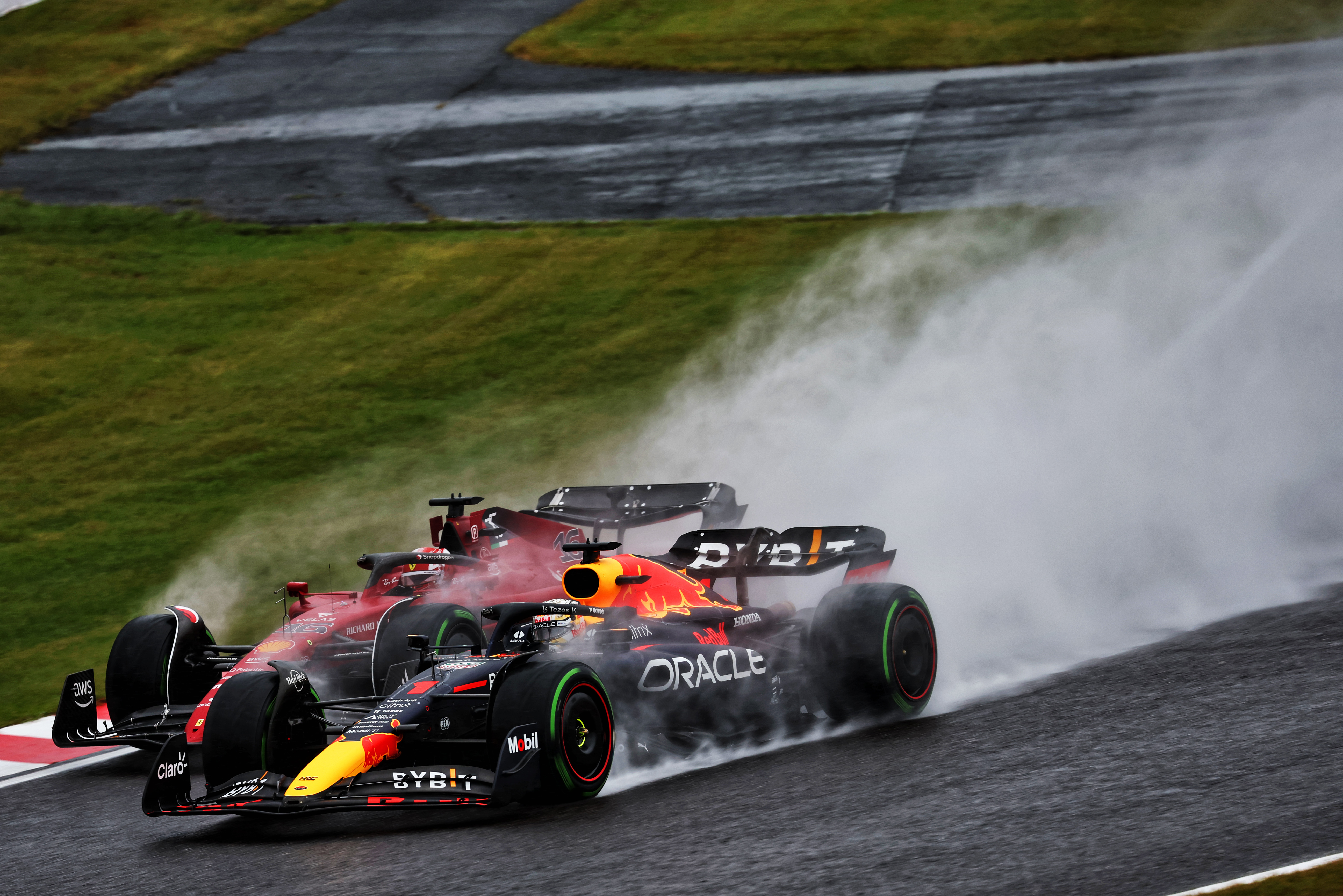Up Next

Ambiguity about regulations made Formula 1 look amateur on Sunday at Suzuka. But there was zero ambiguity about Max Verstappen’s performance as he took apart the opposition to win his second world title in the most emphatic way imaginable.
The weather meant only 27 of the Japanese Grand Prix’s scheduled 53 laps were completed within the remaining two hours of the permitted three-hour window – after the initial two-lap race was red-flagged. Which was widely expected – even by Red Bull – to mean that the race winner would get only 19 points rather than 25. In which case Verstappen’s crown would not have been mathematically secure.
When the FIA announced that full points would be applied, virtually every sporting director in the pitlane checked and re-checked the relevant section of the regulations (which had been rewritten after the debacle at Spa last year).
Yes, it was true. The regulation, as written, stipulates only what happens when a red-flagged race doesn’t run the full distance. Not what happens when a time-limited race runs to the chequered flag, such as this.
Therefore, according to the written regulations, race control had no alternative but to award full points and as such Verstappen was champion, once Charles Leclerc’s Ferrari had been penalised out of second with a five-second penalty for leaving the track and gaining an advantage at the chicane in his final-lap clash with the other Red Bull of Sergio Perez.
This is absolutely not the intent of this regulation, which it is now recognised was written incompletely last year and is set to be revised to reflect the intention. Otherwise, taken to its logical conclusion, the current regulation would mean that a three-lap race, so long as it saw the chequer, would be awarded full points…

But that all meant precisely nothing, just procedural bookkeeping, while there were 20 guys out there giving it their all around Suzuka in conditions of appalling visibility. Blinking lights suddenly looming out of the spray, 160mph corners somewhere ahead.
Carlos Sainz aquaplaned out of fourth place on the opening lap, bounced it off the Turn 12 barriers and sat tensed hoping he wouldn’t be run into side-on. Lewis Hamilton passed at about 150mph inches away, with no idea the Ferrari was even there.
The Sainz incident created a remarkably scary sequence, as Pierre Gasly collected part of the barrier hoarding and drove back to the pits to have it removed as the race came under the safety car.
The rain was increasing, so he had a set of wets fitted. He was pressing on in order to catch the back of the safety car queue when the red flag was shown. It was right call to red flag it. Quite aside from having to recover the crashed Ferrari and the broken-down Williams of Alex Albon, the rain had intensified, everyone was on inters and rivers were running across the track.
But it wasn’t right – regardless of whether the regulations allow it – to bring a recovery vehicle on track with cars still on it, even if their speed was being very tightly controlled past the incident by the safety car.
The delayed Gasly, flying along on his full wet tyres, was not being controlled by the safety car. The red flag was shown before he arrived on the scene – but only just. He barely had time to react. His shock can be imagined as he flew by a truck, especially given the awful resonance of 2014 here.
A couple of hours of waiting for the worst of the rainfall to pass, three laps behind the safety car on full wets to clear the worst of the standing water – and they were released once more. Verstappen was the only one who could see where he was going but even that isn’t a full explanation for his devastating, pummelling performance at the front.

He’d already shown his determination to take no prisoners in the first start. He hadn’t got off the line well, just as he hadn’t when he’d made a dummy start from the grid. Low revs to avoid excess wheelspin, it bogged down, almost as badly as in Singapore last week.
Leclerc was instantly up his inside and ahead as they barrelled down to Turn 1 in a plume of spray but Verstappen just kept up the momentum and sat it out around the outside, the longer but – in the rain – grippier way around. Leclerc gave him room, tucked in behind and harried him for all he was worth. Up through the Esses and around the Dunlop sequence and already they’d pulled out a big gap over Perez and Sainz before the latter exited stage left and neutralised the race.
Upon the restart Leclerc again gave spirited chase initially, the pair pulling out over 3s in one lap on Perez who had Esteban Ocon, Hamilton and Fernando Alonso snapping at his heels. But that was perfect for Red Bull in that it allowed Perez to hold the others back as almost everyone pitted to replace their wets with inters. This was lap seven, one after the restart. Verstappen’s advantage also meant there was no need to stack Perez.
Sebastian Vettel and Nicholas Latifi had pitted the lap before, following the safety car in. It would artificially boost their positions, even if they would be struggling with worn fronts sooner than everyone else. Alonso stayed out a lap longer than most others, dropping him a place behind Vettel, with whom he would later contest an epic dice.
Mick Schumacher stayed out, leading the race still on wets, hoping for a safety car or red flag (both of which looked quite feasible, so obviously hazardous were conditions). On his old, overheated rubber he was something of a mobile chicane as Verstappen and Leclerc exited on their new rubber and quickly caught him. This gave Max a useful break as he passed him before Turn 1, leaving Leclerc having to follow the Haas through the Esses.
Once past, Leclerc pushed on, matching Verstappen’s pace, the pair lapping up to 2s faster than anyone else. The Ferrari was able to be driven like this only for three laps before its front tyres began to surrender. At which point Verstappen disappeared up the track in a ball of spray all his own. No one would see him again until parc ferme as he pulled out 26s in the next 20-odd laps before the three-hour race limit was reached and the chequer shown.

The Ferrari’s tyre degradation had been apparent even on Friday and in trying to stay with Verstappen, Leclerc was essentially asking way too much of the car’s tyres.
“I think that by pushing too much on the very first lap, we simply destroyed the front tyres,” said Mattia Binotto, “in a way that it was not possible to recover. So we need together with Charles and the engineers to review, maybe he was attacking a bit too much to try and close the gap, maybe destroyed [the tyres] and as a consequence, he had not any more the right pace for the following laps.
“On the single lap, I think the pace and the speed was there. But in terms of tyre management, certainly we could have done something different.”
Perez steadily closed down what had been a 7s deficit to be within touching distance of the Ferrari for the last few laps and on a couple of occasions they almost did touch, Leclerc being very smart in his lines to maximise traction.
Hamilton’s Mercedes could probably have joined in this fight had he not been stuck behind the Alpine of an immaculately defending Ocon right from the start.
Mercedes had pitched its wing level high here, Alpine fairly low. So the Mercedes was working its tyres nicely but was much slower on the straight and with no DRS available because of the conditions, Lewis failed to pierce Esteban’s stout defence.
But the Alpine – with the very effective floor upgrade introduced in Singapore – was closer to the pace in qualifying than it’s been all season and Ocon put it fifth on the grid, ahead of Hamilton.
The Mercedes was the faster race car, though. There was just no way through. The defining image of their committed dice was Hamilton’s front wheel literally about an inch away from Ocon’s rear as they approached 130R flat-out amid the spray, sparks flying from the Alpine’s floor.
The sister Alpine of Alonso stayed out a lap too long before switching to inters in hindsight, bringing him out behind the earlier-stopping Vettel and being caught fast by a recovering George Russell, who had lost places by being stacked in the pits behind Hamilton.
Once Alpine observed Guanyu Zhou’s Alfa Romeo lapping 4s faster on fresh inters than it had on old ones, it brought Alonso in for a second stop before Russell caught him. Within four laps he’d paid for his pitstop, had passed Russell and was catching Vettel fast. They diced beautifully, Vettel fending off his aggressive attacks, Alonso always giving room.

Racing against the three-hour countdown clock, the final lap turned out to be lap 27. Verstappen took the flag a dominant winner but at this point not the world champion. Then Leclerc – under intense attack from Perez – went too deep in braking for the chicane on his worn rubber and ran straight on.
He came out ahead and took the flag still second but the five-second penalty which dropped him down to an official third ensured he could no longer equal Verstappen’s score in the remaining races. Once the race had been declared as a full points event, that is.
Switching between pleased, bewildered, uncertain and finally utterly delighted, Verstappen acknowledged his new status as a double world champion.
Ocon and Hamilton remained almost as one across the line but that wasn’t as close as Vettel and Alonso. The Aston Martin stayed ahead of the Alpine but you’d need the timing beam to know it, as they crossed the line side-by-side.
Russell’s prospects had been hindered by that pit stacking but he made a couple of inventive moves between Turns 6 and 7 on his way to eighth, with Williams’s Latifi hanging onto some of the track position his early switch to inters had given him by taking ninth, fending off Lando Norris’s McLaren.






